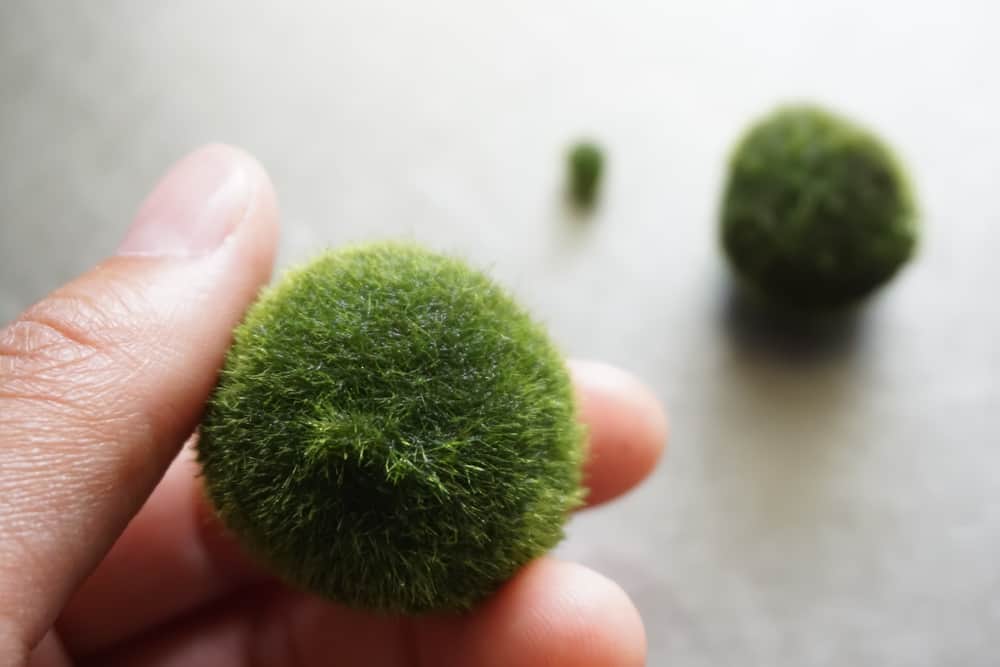
Marimo moss balls are little fuzzy balls some hobbyists put in their aquarium with their plants or instead of them.
Not only do they give your aquarium a more natural look, but they also benefit the ecosystem of the tank in many ways.
In this article, you’ll find out how many moss balls you’ll be needing for your aquarium, how they can benefit your fish, and how to keep them healthy.
How Many Marimo Balls Are Needed Per Gallon?
As a rule of thumb, you’ll need one to three of them per gallon.
Usually, 2.5-inch Marimo balls are appropriate for all tank sizes.
Here are a few examples:
- Four to eight will be needed for a five-gallon aquarium.
- Eight to 13 for a 10-gallon tank.
- Thirteen to 20 for a 20-gallon tank.
With these numbers, you’ll be sure there are enough Marimo balls to maintain a balanced ecosystem in your tank but not too many which would cause problems.
Moss balls can get as big as 12 inches, but they grow very slowly, as it takes them eight to 15 years to mature.
You won’t have to worry about their size any time soon.
Even if they grow too large, you can split the ball and roll the smaller parts into individual moss balls.
If you put too many moss balls on top of each other, they’ll shade one another, and some of them won’t get enough light.
As a result, they’ll get sick and turn brown.
Overstocking the tank with moss balls is also bad for your fish since they won’t have enough nutrients or room to swim comfortably.
Plus, you can’t add any other decorations or ornaments to your tank.
What Are Marimo Moss Balls, Anyway?
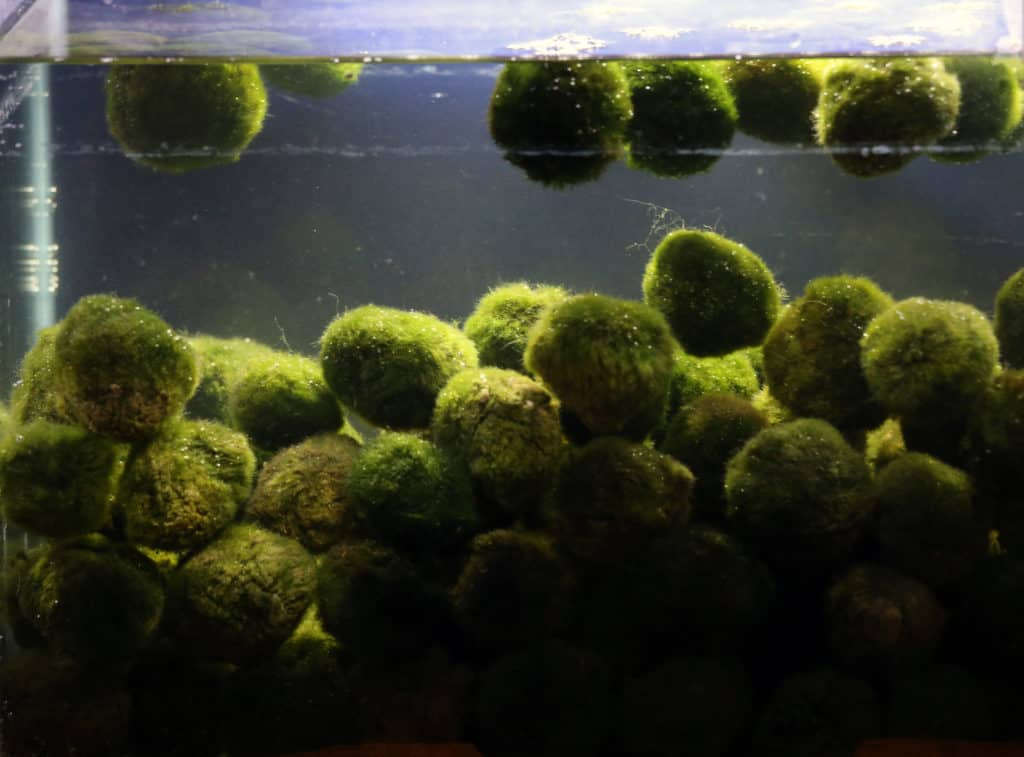
Marimo moss balls were first discovered in Japan.
They form in the wild when the algae roll around themselves.
They take the shape of a soft, green ball because the waves roll them along the water beds.
In other words, these balls are made of algae, packed together densely, without a core.
Don’t let the algae name scare you!
Marimo moss balls won’t hurt your aquarium.
In fact, they’ll bring lots of benefits to the aquascape.
Types of Moss Balls
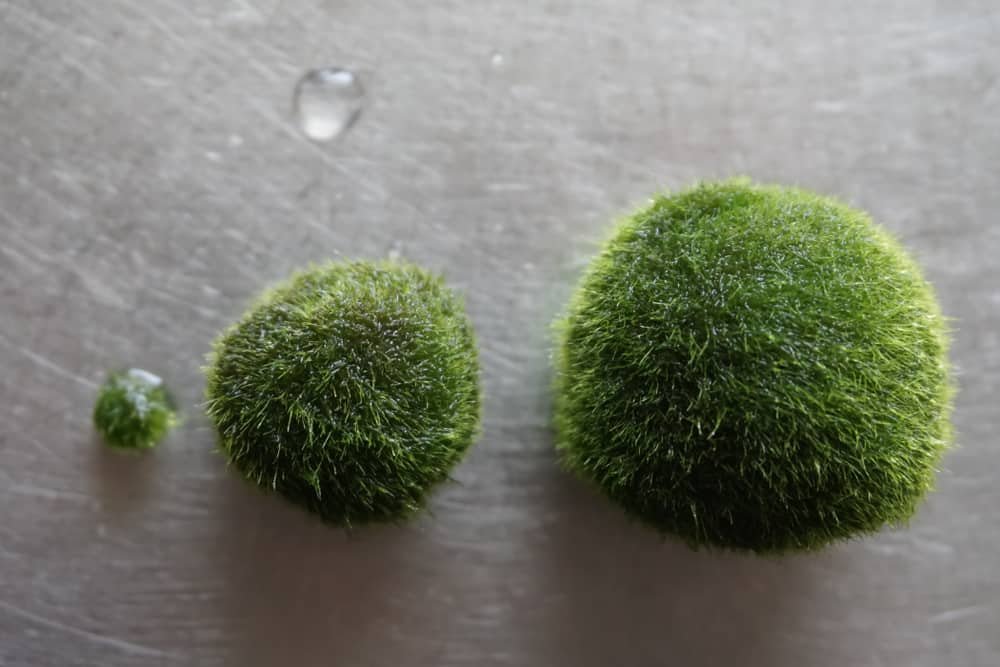
1. Marimo Moss Balls
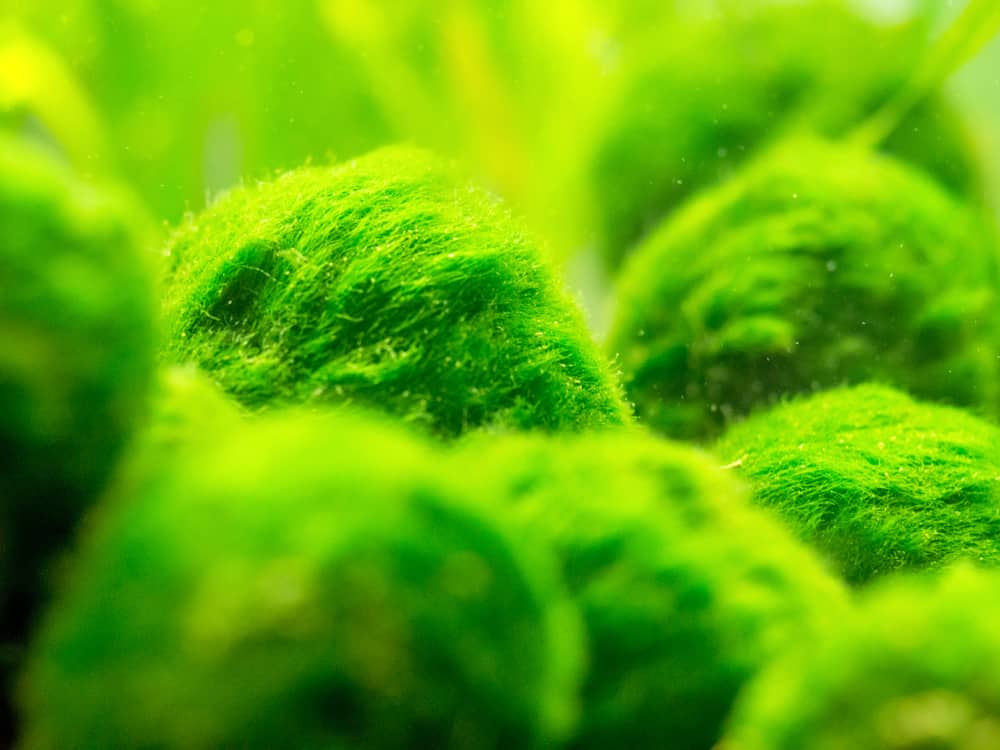
These are the only moss ball variety which forms naturally in the wild.
Marimo balls are pretty rare, and they’re classified as endangered in Japan.
They’re easy to maintain, and they’ll bring life to your aquarium.
2. Java Moss Balls
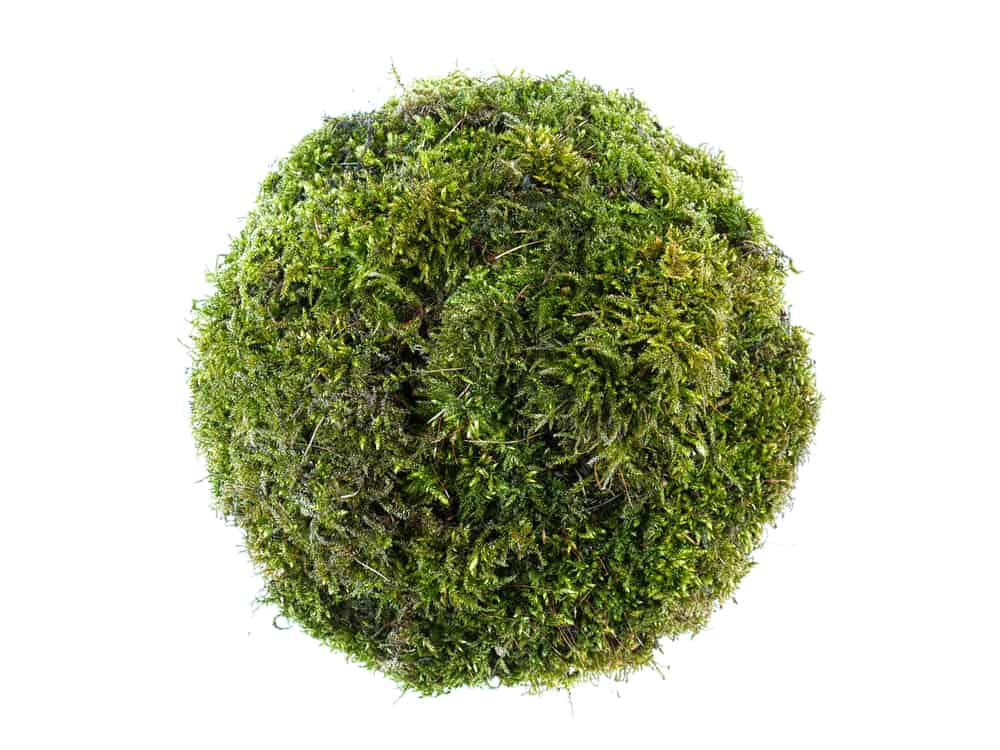
Java moss balls are hand-made moss balls, and making them with the desired shape and size is pretty hard.
They’re made by gluing the algae to a Styrofoam or plastic core.
3. Artificial Moss Balls

These are fake plastic moss balls used for decorating tanks.
They’re cheaper, and they won’t need any maintenance.
Artificial moss balls are good options for creating hiding spots for your smaller fish.
Marimo Moss Balls’ Benefits for Your Tank
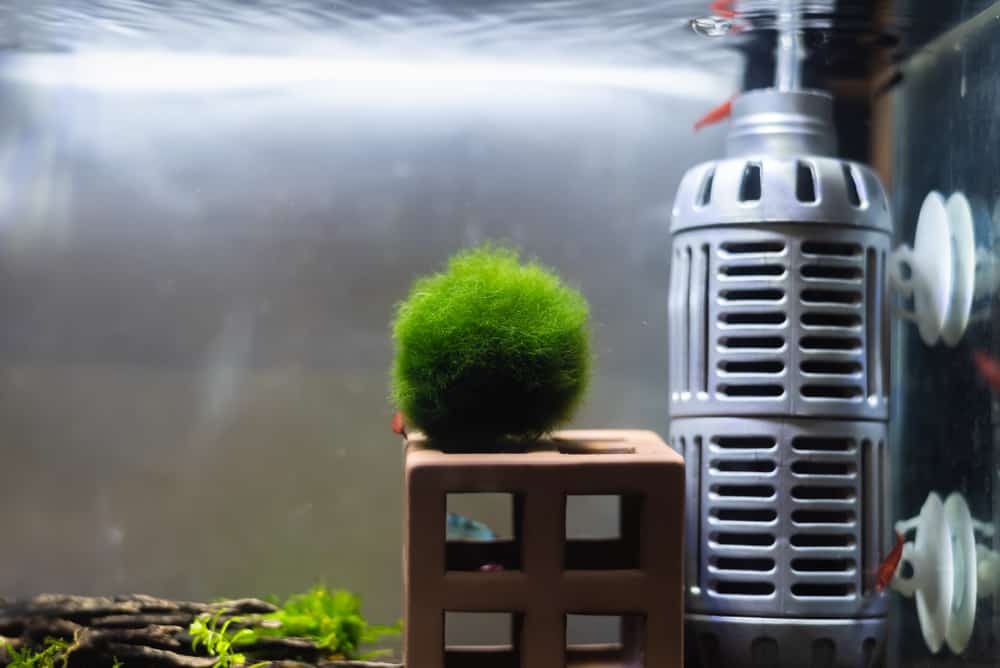
1. Absorb Harmful Chemicals
Much like other plants, moss balls remove waste from the water.
They’ll absorb byproducts of fish waste, such as nitrates, nitrites, and ammonia, all of which are highly toxic for your fish.
This will help them photosynthesize.
They’ll also act as small filters that suck up phosphates and other debris.
2. Provide Oxygen
Moss balls use the CO2 in the water, process it into carbohydrates, and produce oxygen for your tank.
3. Prevent Excess Algae Growth
Algae need nitrogen, nitrates, and ammonia to grow in a tank.
Since moss balls are made of algae themselves, they’ll out-compete the harmful algae and use up all the nutrients they need.
This way, you can control algae growth and prevent them from taking over the substrate, decorations, and glass.
4. Harbor Beneficial Bacteria
Beneficial bacteria can colonize on the surface of Marimo moss balls and help maintain the tank’s nitrogen cycle.
5. Require Minimal Maintenance
Unlike other plants that need to have their roots in aquarium soil or gravel, you can place Marimo balls anywhere freely.
Taking care of plants is considerably harder.
You have to give them proper nutrients, trim their leaves regularly, and remove dead leaves from the tank.
Moss balls don’t need any of these, so they’ll be good to go once you have some light and fish in your tank.
6. Tolerant and Hardy
Marimo balls can tolerate high pH levels and even brackish waters.
They can even stay alive outside the water for a couple of days as long as they remain moist.
Remember not to use algaecide or chlorine in your tank since these chemicals can instantly kill the moss balls.
Untreated tap water and regular saltwater both have chlorine in them.
7. Tank Inhabitant
Many aquatic creatures enjoy Marimo moss balls in their tanks.
For example, shrimp that enjoy eating algae love having moss balls around.
They’ll feed off the algae and the debris that builds up on the surface.
Interestingly, Betta fish love to play with moss balls and roll them around the tank when they’re bored.
Other fish and fry can use them as hiding places.
8. No Waste
Plants shed their old leaves as they grow new ones.
The leaves will fall to the bottom of the tank and start to decay and produce ammonia, which will mess up the nitrogen cycle.
Moss balls won’t produce any waste, and they’ll stay green as long as they’re healthy.
Usually, when you buy aquatic plants, they’ll bring small creatures like pond snails or even bacteria and parasites with them to your tank. Moss balls are cleaner.
9. Snail-Proof
Some snails like to eat aquatic plants, which result in decaying leaves, but snails won’t hurt or eat your Marimo moss balls.
Disadvantages of Marimo Moss Balls

1. Not Effective in Large Tanks
Marimo moss balls work best for smaller tanks because larger tanks often have more fish and more waste, and small Marimo balls can’t get rid of all of it.
If you own a big tank, you’ll have to add other large plants or huge Marimo balls.
2. Slow Growth
Moss balls are one of the most slow-growing plants: they only grow a couple of millimeters every year! T
hey can eventually reach the size of a softball, but that’ll take years, so don’t be surprised if your moss ball doesn’t seem to be growing.
3. Hard to Reproduce
All plants spawn after some time, but as it takes years for moss balls to reach maturity, it’ll take them the same amount of time to reproduce.
When they get big, a small lump starts to grow on the ball.
It’ll eventually fall off and live on its own.
This is how moss balls reproduce naturally, but it can also happen forcibly.
You can squeeze a Marimo ball, split it into a couple of smaller pieces, then roll them around the tank, so they become round.
4. Food for Goldfish
Goldfish eat almost everything, and moss balls aren’t an exception, so don’t be surprised if you catch your goldfish tearing a moss ball apart.
How to Take Care of Marimo Moss Balls

1. Lighting
The most important thing you should do for your Marimo moss ball is to provide the proper light.
These plants grow at the bottom of the lakes, so they receive medium indirect sunlight.
However, don’t put the tank under direct sunlight for long because it’s harmful to your fish and the Marimo balls.
The water temperature will rise quickly, the dissolved oxygen levels will drop, and your fish will be in danger.
The Marimo balls will also turn white if they’re exposed to direct sunlight for long.
2. Water Change and Cleaning
The regular water changes you do for your fish are enough for your Moss ball, as well.
However, every time you do a water change, take the Marimo balls out of the water and squeeze them over another container to get out all the dirt and debris.
Then put them back in the tank.
The balls may float for a while because water hasn’t penetrated the ball yet.
You can either let them be until they sink or squeeze them again underwater.
3. Shape
Moss balls shouldn’t remain in one position and on one side for too long because they’ll start to flatten.
Make sure to roll them every now and then.
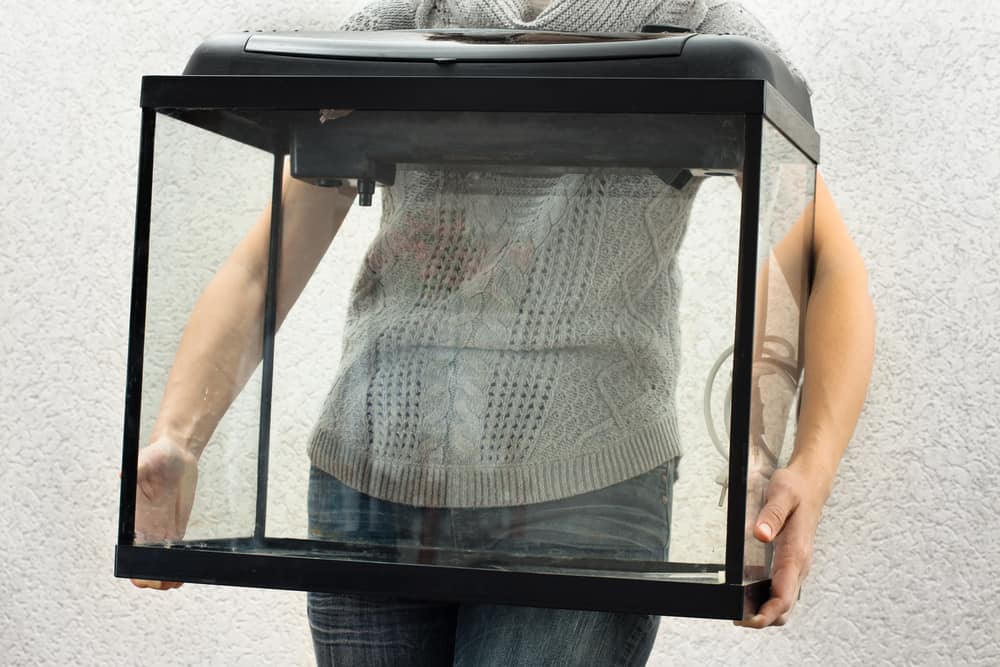

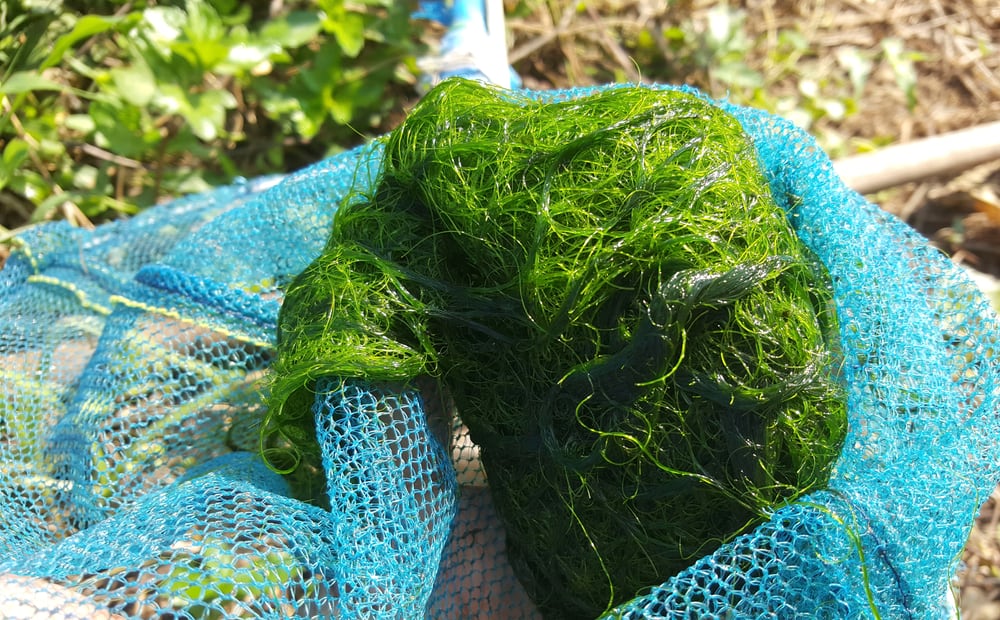
Leave a Reply
You must be logged in to post a comment.